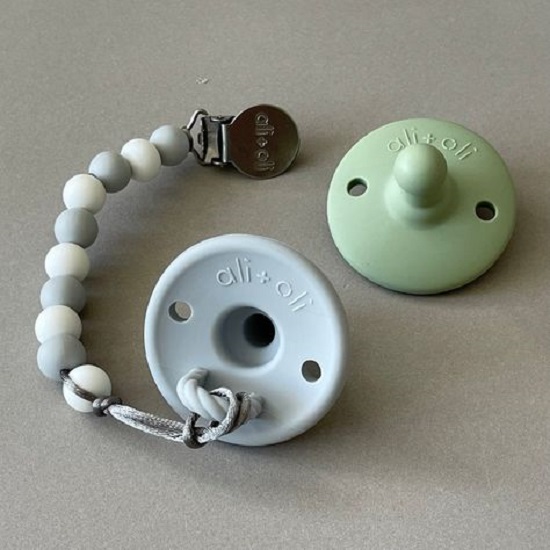Physical Address
304 North Cardinal St.
Dorchester Center, MA 02124
Physical Address
304 North Cardinal St.
Dorchester Center, MA 02124

Do pacifiers calm babies? Pacifiers are a common sight for newborns and babies. But are they truly effective at calming fussy little ones? Let’s explore the potential benefits of pacifiers and some important considerations for parents.
Newborns have a natural sucking reflex. This reflex is present even before birth, and it serves several purposes, including:
Sucking can be a calming and comforting sensation for babies. It can help them regulate their emotions and soothe them when they’re feeling fussy or upset.
Sucking is also important for the development of a baby’s mouth and jaw muscles. It helps them practice sucking for nourishment and prepare for future speech development.
Sucking on a breast or pacifier can mimic the feeling of suckling at the breast, which can be comforting for some babies and promote feelings of closeness and bonding.
Pacifiers can tap into this natural sucking reflex and provide a safe and satisfying way for babies to self-soothe.

Here are some of the potential benefits of using pacifiers:
Reduced fussiness and crying: Studies suggest that pacifiers can be effective in reducing crying and fussiness in babies. This can be a relief for parents who are feeling overwhelmed by constant crying.
Improved sleep: Sucking on a pacifier may help some babies fall asleep more easily and sleep for longer stretches. This can be beneficial for both babies and parents who need rest.
Pain relief: Sucking can provide a natural pain reliever for babies experiencing minor discomfort, such as gas or teething pain.
Reduced risk of SIDS: Some studies suggest a possible link between pacifier use and a reduced risk of Sudden Infant Death Syndrome (SIDS). However, more research is needed to confirm this link.
Important Note: If you’re considering using a pacifiers, talk to your pediatrician first. They can advise you on the latest recommendations and answer any questions you may have.
 Considerations for Pacifier Use
Considerations for Pacifier UseWhile pacifiers can offer many benefits, there are also some considerations for parents to keep in mind:
Breastfeeding: Frequent pacifier use in the early weeks may interfere with breastfeeding. If you’re planning to breastfeed, it’s generally recommended to wait until breastfeeding is well-established before introducing a pacifier.
Ear infections: Some studies suggest a possible link between pacifier use and an increased risk of ear infections. However, the research is inconclusive.
Pacifier dependence: Some babies may become reliant on pacifiers for comfort. This can make it difficult to wean them off the pacifier later on.
Speech development: Excessive pacifier use may potentially delay speech development. However, most research suggests this is not a significant concern.
Remember: Every baby is different. What works for one baby might not work for another. It’s important to find what works best for you and your baby.
If you’re concerned about the potential drawbacks of pacifier use, here are some alternative soothing techniques for babies:
Skin-to-skin contact: Holding your baby close skin-to-skin can be very calming and comforting.
Sucking on a finger: While not ideal long-term, sucking on a finger can be a natural way for some babies to self-soothe.
Swaddling: Swaddling can mimic the feeling of being in the womb and can help some babies feel secure and comforted.
Shushing and rocking: The rhythmic sounds of shushing and the gentle rocking motion can be very soothing for babies.
Warm bath: A warm bath can be a relaxing and calming experience for many babies.
There are many ways to comfort a fussy baby. Experiment and find what works best for your little one.

If you decide to use a pacifier, here are some tips for safe and effective use:

Ultimately, you are your baby’s best source of comfort. Here are some ways you can soothe your baby without a pacifier:
Respond to your baby’s cries: When your baby cries, it’s their way of communicating a need. Try to respond promptly to their cries to build trust and security.
Skin-to-skin contact: Holding your baby close skin-to-skin can be very calming and comforting.
Sucking on a finger: While not ideal long-term, sucking on a finger can be a natural way for some babies to self-soothe.
Swaddling: Swaddling can mimic the feeling of being in the womb and can help some babies feel secure and comforted.
Shushing and rocking: The rhythmic sounds of shushing and the gentle rocking motion can be very soothing for babies.
Warm bath: A warm bath can be a relaxing and calming experience for many babies.
Sing to your baby: Singing is a lovely way to bond with your baby and can be very soothing.
There are many ways to comfort a fussy baby. Experiment and find what works best for your little one.

Babies thrive on routine. Establishing a calming bedtime routine can help signal to your baby that it’s time to wind down and prepare for sleep. Here are some elements you can incorporate into your routine:
Warm bath: A warm bath can be a relaxing way to prepare your baby for sleep.
Dim lights: Dim the lights in the nursery to create a calming atmosphere.
Massage: Gently massaging your baby can be very soothing and promote relaxation.
Singing or rocking: Singing or rocking can be a comforting way to connect with your baby before sleep.
Story time: Reading stories to your baby can be a lovely way to bond and establish a relaxing bedtime routine.
By creating a consistent and calming routine, you can help your baby fall asleep more easily and sleep for longer stretches.
Pacifiers can be a helpful tool for calming and soothing babies. However, it’s important to weigh the potential benefits and drawbacks and to be aware of alternative soothing techniques. Talk to your pediatrician for guidance on whether pacifiers are right for your baby and how to use them safely and effectively.